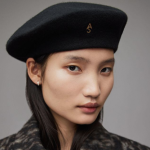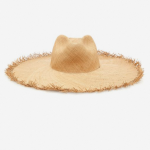Juju hats, also known as Bamileke hats or feather headdresses, have transcended their cultural roots to become a captivating phenomenon in the world of interior design and fashion. Originating from the Bamileke people of Cameroon, these vibrant and intricately crafted hats boast a rich history and undeniable visual impact. This comprehensive guide delves into the fascinating world of hats, exploring their origin story, cultural significance, types of feathers used, and how to incorporate these beautiful objects into your home decor or personal style.
A Cultural Tapestry: The Origin and Significance of Juju Hats
Juju hats are steeped in the cultural heritage of the Bamileke people of Cameroon. Traditionally, these feathered headdresses were worn by royal dancers and chiefs during important ceremonies and celebrations. The size and elaborateness of the juju hat symbolized the wearer’s social status and prestige within the community.

The feathers used in hats held specific meanings. Chicken feathers, the most common type, represented prosperity and wealth. Other feathers, such as those from hornbills or parrots, might symbolize courage, wisdom, or spiritual connection with the animal kingdom. The vibrant colors used in hats also carried meaning, with red often associated with strength and royalty, while blue represented peace and harmony.
Today, juju hats continue to be crafted in Cameroon, often by hand using traditional techniques. While their ceremonial use has diminished, juju hats have gained international recognition for their beauty and cultural significance.
A Symphony of Feathers: Exploring the Different Types Used in Juju Hats
The captivating beauty of juju hats lies in their unique feather adornments. Here’s a closer look at the types of feathers commonly used:
-
Chicken Feathers: The most widely used feathers in hats, chicken feathers come in a variety of natural colors, from white and cream to black and shades of brown. They are readily available, relatively inexpensive, and offer a beautiful base for the juju hat’s design.
-
Duck Feathers: Duck feathers add a touch of luxury to hats with their iridescent sheen and soft texture. The most commonly used colors are green, blue, and brown, adding depth and dimension to the overall design.
-
Goose Feathers: Goose feathers are prized for their large size and soft plumes. They are often used to create a dramatic and voluminous effect in hats. Natural goose feathers come in white, grey, and beige tones.
-
Guinea Fowl Feathers: These speckled feathers add a unique textural element to hats. Their distinctive spotted pattern creates visual interest and complements other feather types beautifully.
-
Exotic Bird Feathers: For a truly show-stopping juju hat, feathers from more exotic birds like hornbills, parrots, or toucans might be incorporated. These feathers boast vibrant colors, unique patterns, and add a touch of the extraordinary.
It’s important to note that ethically sourced feathers are crucial. Many reputable juju hat artisans ensure their feathers are obtained through sustainable practices and avoid feathers from endangered bird species.
Beyond Ceremony: Embracing Juju Hats in Modern Decor
Juju hats have transitioned from ceremonial attire to coveted home decor pieces. Their vibrant colors, textural elements, and cultural symbolism make them a captivating addition to various design styles. Here are some ways to incorporate juju hats into your living space:

-
Statement Wall Art: The most common way to use juju hats in modern decor is as wall art. Hang a single juju hat above a sofa, fireplace, or bed for a bold and eye-catching statement piece. You can also create a gallery wall featuring juju hats in different sizes and colors.
-
Bohemian Flair: Juju hats add a touch of bohemian flair to any room. Pair them with woven baskets, macrame wall hangings, and earthy tones for a relaxed and inviting atmosphere.
-
Global Fusion: Juju hats can elevate a global fusion design scheme. Combine them with African sculptures, mudcloth textiles, and other cultural artifacts to create a space rich in texture and visual intrigue.
-
Eclectic Appeal: For an eclectic space, hats can add an unexpected pop of color and texture. Hang them alongside abstract art, mix-matched furniture, and bold patterns for a unique and personalized look.
When incorporating hats into your decor, consider the size and scale of the piece in relation to your space. Ensure the colors and style complement your existing decor for a cohesive aesthetic.
Adorn Yourself in Culture: Juju Hats as a Fashion Statement
Juju hats have extended their reach beyond home decor and are now making a statement in the fashion world. While not for everyday wear, hats can be a show-stopping accessory for special occasions, photo shoots, or music festivals. Here are some tips for rocking a juju hat with style:
-
Confidence is Key: Juju hats are bold statement pieces, so confidence is essential when wearing one. Own the look and embrace the attention it will garner.
-
Balance the Proportions: Since juju hats add volume on top, balance the proportions of your outfit. Pair them with fitted clothing on the bottom, such as a slim-fitting dress, tailored pants, or a high-waisted skirt.
-
Color Coordination: Consider the colors in your juju hat when choosing your outfit. Opt for solid colors that complement the dominant hues in the feathers for a cohesive look.
-
Accessorize Wisely: Keep your jewelry simple when wearing a juju hat. Statement earrings or necklaces might compete with the visual impact of the hat. Opt for delicate bracelets or rings to complete your look.

-
Embrace the Occasion: Juju hats are best suited for special events like costume parties, themed galas, or music festivals. They can also elevate a photoshoot outfit or add a touch of drama to a carnival costume.
Remember: When incorporating hats into fashion, ethical sourcing is paramount. Ensure the feathers are obtained sustainably and avoid hats made with endangered bird species.
Where to Find Your Perfect Hat: Exploring Buying Options
The growing popularity of juju hats has led to a wider availability of these unique pieces. Here are some places to look for your perfect juju hat:
-
Online Marketplaces: Several online marketplaces offer juju hats from artisans around the world. Be sure to check seller reviews and ensure the feathers are ethically sourced before making a purchase.
-
African Art Galleries: Many African art galleries carry juju hats as part of their collection. This allows you to see the hats in person, appreciate the craftsmanship, and get expert advice on choosing the right piece.
-
Home Decor Stores: Some home decor stores have incorporated juju hats into their selection. This can be a convenient option for finding a juju hat that complements your existing decor style.
-
Travel to Cameroon: For the ultimate juju hat experience, consider visiting Cameroon and purchasing one directly from a local artisan. This allows you to support the cultural tradition and get a truly unique and authentic piece.
The Enduring Allure of Hats
Juju hats are more than just decorative objects; they are a vibrant expression of culture, history, and artistic tradition. From their ceremonial roots to their modern-day applications in fashion and decor, juju hats continue to captivate hearts and imaginations around the world. Whether you’re seeking a statement piece for your home or a bold accessory for a special occasion, a juju hat offers a unique blend of beauty, cultural significance, and undeniable flair. So, explore the world of juju hats, appreciate the artistry involved, and embrace the chance to connect with a rich cultural heritage through these captivating feathered creations.


